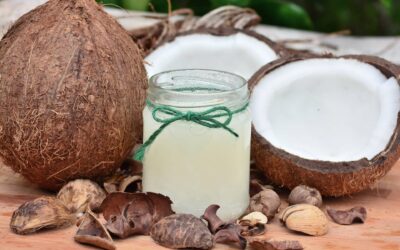A General Overview of the Indonesian Palm Oil Industry
Palm oil is known to be the most produced and the highest consumed vegetable oil in the world today. Its production is cheap and the most efficient in yields compared to the other vegetable oils like soybean, sunflower or rapeseed oil. Palm oil is highly stable and used in a variety of industries today and it is commonplace to find an ingredient of palm oil on the labels of almost every product on the shelves of our local supermarkets.
Palm oil is widely used today in the food industry, personal care, and cosmetics. Not forgetting the rising demand for palm oil for biodiesel or biofuel production. Even the by-products of the palm oil industry are seen to create another industry for its self. This can be seen in the production of products like candles, glycerin, charcoal, fertilizers, and animal feeds.
Palm oil is produced in countries along the tropical lines of the equator with a close example to regions of central and western Africa, South America, and with South Eastern Asia topping the charts of palm oil production in the world and Indonesia leading the way. The climatic condition which largely determines the yields of the oil palm production greatly favors the above-mentioned regions. With a combination of warm temperature, sunshine and at least 1600mm rainfall per year; the Oil palm tree will succumb to natures needs and yield the required level of palm oil to meet the unceasing demand.
Indonesia and Malaysia account for over 85% of the worlds palm oil production. The demand for palm oil has only been increasing in the past decades so as production. This can be attributed to the increasing global population looking forward to satisfying their basic needs and governments on their part, favoring the use of biofuel.
Indonesian Palm Oil Industry.
Indonesia stands out as the world leading exporter of palm oil and produces close to half of the world consumption of palm oil. Indonesian palm oil producers have experienced some rapid growth in recent years and this growth is expected to double or even triple in the years to come.
This rapid increase and growth are due to the continuous increase in world demand and Indonesia is responding with an increased production and export figures, not leaving out the robust increase of the cultivation areas.
Indonesian farmers have been able to increase cultivation and yields significantly all for the need to meet the unceasing global demand. Farmers have even been reluctant to produce other cash crops like cocoa, coffee or rubber. All efforts have been geared toward the cultivation of palm oil as they see the potentials of the demanding market.
Indonesian cultivation land area stretches to over 11 million hectares of land considered to be the size of some nations or even doubled and it is expected to get up to over 13 million in the coming years. Indonesia also faces an increase in domestic demand due to the rapid growth of the Indonesian population and a rising middle class. The Indonesian production trajectory for 2020 is estimated to stand at 40 million tons of crude palm oil per annum.
The Indonesian Palm oil industry is the economy’s backbone as it is not only an important foreign exchange earner but employs millions of Indonesians. Looking at agriculture, palm oil is the most vital to the economy’s GDP.
The Production
Indonesia has been producing palm oil since the early 1960s and since then, the industry has known only growth as its production increased from 157 thousand to over 33.5 million tons by 2014. Majority of the palm oil plantations are in the Sumatra (70%) and the Kalimantan region (30%) and produces over 36 million tons of palm oil-related products by 2018.
In 2017, Indonesia held over 54% share of the world’s palm oil export with an annual growth value of 29% and over $18.5 billion in export value with an export quantity of over 25 million tons to the world.
From 2008 to 2016, Indonesia experienced an increase in palm oil production from 19.2 million tons to 32.0 million tons which shows a 66.6% increase in production within an 8-year time frame.
The Indonesian rainforest is known to be the third in the world is accountable for the entire palm oil production. An annual average production rate of 4 tons per hectare is stilled obtained from palm trees which were planted for over 25 years ago. The country has been showing motives to increase production with new varieties which is estimated to double or even triple production.
World bank reports stipulated a 50% CPO produced by Indonesia is exported as un-refined whereas the other 50% is refined into cooking oil of which 50% is exported and the remaining refined oil is being consumed locally. Sumatra and Borneo are the two islands responsible for over 96% of Indonesian palm oil production.
The Distribution of the Indonesian Palm Oil Plantations.
The Indonesian palm plantations are distributed among the government-owned plantations, the big privately owned plantations, and the smallholder farmers. The big state-owned plantation is made of about 6.63% while the big private plantations and smallholder farmers control 52.88% and 40.49% respectively. The big private plantations produce more than half of the Indonesian palm oil.
Indonesia’s main focus has been towards the exportation of raw or crude palm oil but in recent years huge corporations have invested massively to upgrade and expand the refining of palm oil capacities. These huge corporations have the added advantage as they are able to obtain huge loans from the banks compared to the smallholder farmers who are always exposed and vulnerable to the threats of the global unstable market prices.
The Government’s Influence In the Indonesian Palm Oil Industry
As mentioned earlier, the Indonesian government owns and controls about 6.63% of the Indonesian palm oil sector but still plays a very important role in boosting the palm oil industry with an incentivized taxing structure which only does not support production but also promotes the export of refined palm oil.
This is seen as the government conveniently slashed out the export tax for refined palm oil in the downstream palm oil industry. However, the export tax for crude palm oil swings between 0 to 22.5 % which largely depends on international palm oil prices. As seen in Oct 2014 and May 2016 the export tax for CPO was cut to zero as international prices dropped below $750 USD per ton.
This is due to an automatic mechanism which checks prices of both the international and local markets and indicates when prices drop below $750 USD when this occurs, the export tax will be cut to zero.
On the other hand, by 2015, the government decided to impose a $50 USD per MT for the export of CPO and a $30 USD per MT of refined palm oil. This was in a bid to recoup from the lower tax revenue from the palm oil industry and to finance the government motivated biodiesel subsidy program.
In the same year of 2015, the Indonesian government declared a $0.10 to a $0.28 increase in subsidy per litter of biofuel so as to protect the local biofuel producers due to the international low price change for regular diesel and biofuel experienced in 2014. With the export levy revenue, the government also seeks to enhance sustainable planting strategies through research and the improvement of human resources in the palm oil Industry in Indonesia
Top 10 Markets For Indonesian Palm Oil
India
As of 2017, India was the largest importer of Indonesian palm oil. India imported nearly 6.4 million tons of palm oil from Indonesia, with exports approaching $4.9 billion. India accounts for nearly 26.5% of Indonesia’s palm oil exports. India is the world’s largest importer of palm oil, accounting for more than 20% of the world’s total imports.
China
China is Indonesia’s second largest importer of palm oil. China ranks second in world palm oil imports, accounting for nearly 10.5% of global imports. As of 2017, China imported nearly 2.7 million tons of palm oil from Indonesia, with imports exceeding US$2 billion. China holds 11% or more share of Indonesia’s palm oil exports.
Pakistan
Pakistan is the third largest importer of palm oil from Indonesia, with imports exceeding 1.75 million tons and imports valued at about $1.45 billion USD. Pakistan accounts for more than 7.5% of Indonesia’s palm oil exports and is the third largest palm oil importer in the world. As of 2017, Pakistan’s global palm oil import share exceeded 6%, with an annual growth rate of 12% in recent years.
Spain
Spain is the fourth largest importer of Indonesian palm oil with an import value of more than $920 million and imports more than 1.1 million tons of palm oil. Spain holds about 5% of Indonesia’s palm oil exports and accounting for more than 4% of world palm oil imports. As of 2017, Spain is the fifth largest palm oil importer in the world.
Bangladesh
Bangladesh is the fifth largest importer of Indonesian palm oil. Bangladesh imported more than 987,000 tons of palm oil from Indonesia, with imports exceeding US$824 million, accounting for 4.5% of Indonesia’s palm oil exports. Bangladesh is the world’s 8th largest importer of palm oil, accounting for more than 2.5% of world imports. Since 2013, imports have increased by 7%, with a total growth rate value of over 43%.
Egypt
As of 2017, Egypt was the sixth largest importer of Indonesian palm oil, importing more than 958,000 tons of palm oil from Indonesia, with imports exceeding US$810 million. This makes Egypt account for more than 4% of Indonesia’s palm oil exports. Egypt accounts for 2% of the world’s palm oil imports and is the 10th largest palm importer in the world.
Netherlands
The Netherlands is the seventh largest palm oil importer from Indonesia in 2017. The Netherlands imported more than 987,000 tons of palm oil from Indonesia, with imports exceeding US$ 773 million, accounting for 4.2% of Malaysia’s palm oil exports. The Netherlands is the world’s fourth-largest importer of palm oil, accounting for more than 5.5% of world palm oil imports. Indonesia’s exports to the Netherlands increased by 37% in 2016.
Italy
Italy ranks 8th in terms of palm oil exports in Indonesia’s market. Italy imported more than 900,000 tons of palm oil from Indonesia in 2017, with imports exceeding US$705 million. Italy accounts for more than 3.8% of Indonesia’s palm oil exports, and for world imports, Italy accounts for 3.2%, making Italy the world’s 6th largest palm oil importer in the world. Recently the export growth value of Indonesian palm oil to Italy increased by 28%.
United States
The United States is the ninth largest importer of palm oil in Indonesia. The United States imported more than 722,000 tons of palm oil from Indonesia, accounting for 3.2% of Indonesia’s palm oil exports, and with an import value of more than 584 million US dollars. In 2016, Indonesian palm oil exports value to the United States increased by 28% per annum. The United States is the world’s seventh largest importer of palm oil, accounting for 3.2% of world palm oil imports.
Malaysia
The 10th place for Indonesia’s palm oil export is Malaysia. Although Malaysia is the second largest palm oil exporter, it still imports palm oil from Indonesia. Malaysia accounts for 2.7% of Indonesia’s palm oil exports, imports more than 595,000 tons, and exports exceed $503 million. In 2016, Malaysian palm oil imports value from Indonesia increased by more than 50% and exports quantity increased by 3% per annum since 2013. Malaysia is ranked as the 18th largest palm oil importer in 2017, with world palm oil imports accounting for only 1.2%.
The Development Of Palm Oil Production In Indonesia.
The only vegetable export from Indonesia is palm oil and it stands to be the most important export for Indonesia as the marketplace is well established and has only known growth. Within an eight-year time frame (2008 – 2016) Indonesia experienced a production growth from 19.2 million tons to 32 million tons which marks a 66.6% increase in production. This is due to the ever-increasing demand in both domestic and international markets.
The development of the palm oil Industry in Indonesia might have a substantial impact on the future market of the palm oil Industry. It is estimated that the global demand for vegetable oil will increase by a 1.6% on average per annum. Looking at the biodiesel sector, in 2015, 30 bL of biodiesel was produced of which 80% of the said production came from vegetable oil.
It is well-known vegetable oil will remain the most vital feedstock for biodiesel production until 2025 in other to meet the increasing world demand of about 41 bL. Over 12% of the world’s production of vegetable oil is used for biodiesel and palm oil is accounted for over a third of the demand. Therefore, considering the use of vegetable oil for food, body care, cosmetics, and other industrial uses, it is clear more palm oil will be needed to meet the global demand. With Indonesia standing at the forefront of palm oil production, more needs to be done for sustainable palm oil production.
The Domestic Demand For Palm Oil In Indonesia
Over 50% of the CPO produced in Indonesia is exported to the world and the remaining produced is refined to meet the domestic demand but still over half of the refined palm oil is still exported. It is crucial to understand what measures are being put in place in other to meet the global demand and domestic demand for palm oil.
It is also seen that the country will definitely need more biodiesel than what is currently being produced to meet the country’s biodiesel targets by 2025 as the government struggles to reduce its reliance on diesel fuel. With that mentioned, Indonesia also exported up to half of the biodiesel produced in 2014.
For the food and industrial sector, palm oil plays a very important role in food diets in Indonesia. With the dietary changes in Indonesia linked to the growing GDP per capita and the rapid increase in population, Indonesia might face the challenge to support international demand for palm oil. Indonesia’s population is projected to increase from 254 million people to 285 million by 2025.
There has also been a huge increase in the oleo-chemical demand for non-food uses such as for pharmaceutical, Cosmetic and industrial uses. Since the Asia-pacific region dominates the oleochemical sector, demand is expected to increase by a 5.1% rate annually.
EndNote
In other for Indonesia to meet both International and domestic demand and with the growing concerns with environmental issues, the country must create awareness for the need of friendly environmental policies, invest more in human resource development and stabilize it’s legal and regulatory policies not forgetting to take a strategic approach in deforestation and addressing land disputes.




